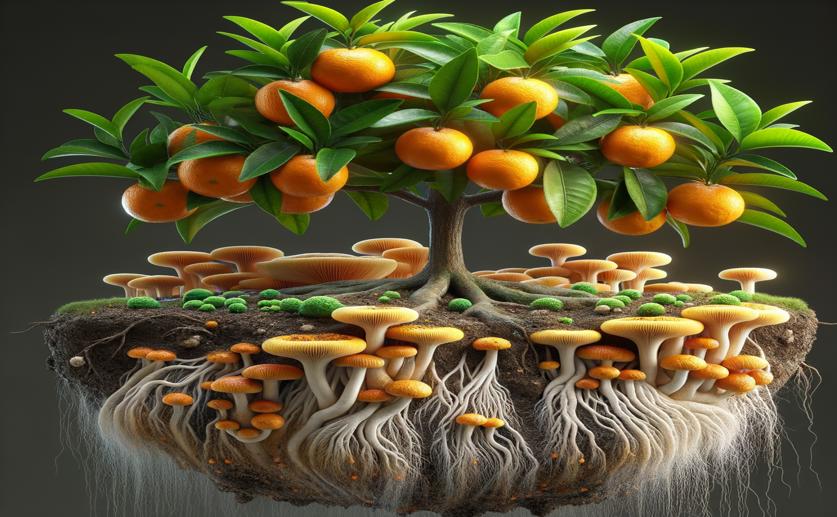How Mandarin Trees Build Defenses with Fungi Help

Image Source: Natural Science News, 2024
Key Findings
- Researchers at Yangtze University found two citrus plant genes, CitCAT1 and CitCAT2, respond to different environmental stresses
- CitCAT1 reacts to high temperatures and short-term stress, while CitCAT2 responds to low temperatures and beneficial fungi
- These findings could help develop crops with better tolerance to temperature extremes, aiding agriculture in the face of climate change
Understanding how plants cope with environmental stress is crucial for improving crop resilience and ensuring food security. Researchers at Yangtze University have made a significant contribution to this field by exploring the role of catalase (CAT) enzymes in the citrus plant, Citrus sinensis cv. "Oita 4"[1]. Catalases are proteins that help protect plants by breaking down hydrogen peroxide (H2O2), a potentially harmful byproduct of plant metabolism that increases during stress conditions.
The study focused on two specific CAT genes, CitCAT1 and CitCAT2. These genes were isolated and their expression patterns were analyzed under various environmental stresses, including temperature changes and fungal interactions. The researchers found that CitCAT1 is highly responsive to high temperatures and short-term stress, while CitCAT2 is more responsive to low temperatures and the presence of a beneficial fungus known as Diversispora versiformis.
Previous research has shown that in maize pollen, only one type of catalase isozyme, CAT-1, is expressed, suggesting a specific role for this enzyme in pollen development[2]. The Yangtze University study expands on this by demonstrating that in citrus plants, two catalase genes are expressed, with each responding to different stress cues. This indicates a more complex system of catalase function in citrus compared to maize, with the potential for tailored responses to specific environmental challenges.
The role of reactive oxygen species (ROS) as signaling molecules in plants has been increasingly recognized[3]. ROS, which include H2O2, are not just harmful byproducts but also key players in signaling pathways that help plants respond to stress. The up-regulation of CitCAT1 and CitCAT2 in response to temperature stresses suggests that these enzymes could be part of the citrus plant's ROS management and signaling system, helping to maintain a balance between necessary signaling and damaging oxidative stress.
Another piece of the puzzle comes from the understanding of how lipids in cell membranes contribute to plant stress responses[4]. While the Yangtze University study doesn't directly address lipid composition, the knowledge that CAT enzymes help maintain cell integrity under stress indirectly supports the idea that membrane lipids and associated proteins work together to protect plants from environmental damage.
The study's findings have practical applications for agriculture, especially in the context of climate change. By understanding how CitCAT1 and CitCAT2 are regulated, researchers can potentially develop strategies to enhance the expression of these genes in crops, thereby increasing their tolerance to temperature extremes. This could lead to the development of citrus varieties that are more resistant to the increasingly unpredictable weather patterns associated with global climate change.
In conclusion, the research from Yangtze University provides valuable insights into the molecular mechanisms by which citrus plants respond to environmental stress. By revealing the distinct roles of CitCAT1 and CitCAT2 in high and low temperature stress responses, respectively, and their interaction with beneficial fungi, this study adds to our understanding of plant resilience and offers potential pathways for developing stress-tolerant crops. This work ties together earlier findings on catalase expression in plants[2], the multifaceted roles of ROS[3], and the importance of membrane lipids[4], offering a clearer picture of the complex web of plant stress responses.
BiotechGeneticsPlant Science
References
Main Study
1) Cloning of CAT genes in Satsuma mandarin and their expression characteristics in response to environmental stress and arbuscular mycorrhizal fungi.
Published 20th April, 2024
Journal: Plant cell reports
Issue: Vol 43, Issue 5, Apr 2024
Related Studies
Related Articles





 5th April, 2024 | Greg Howard
5th April, 2024 | Greg Howard